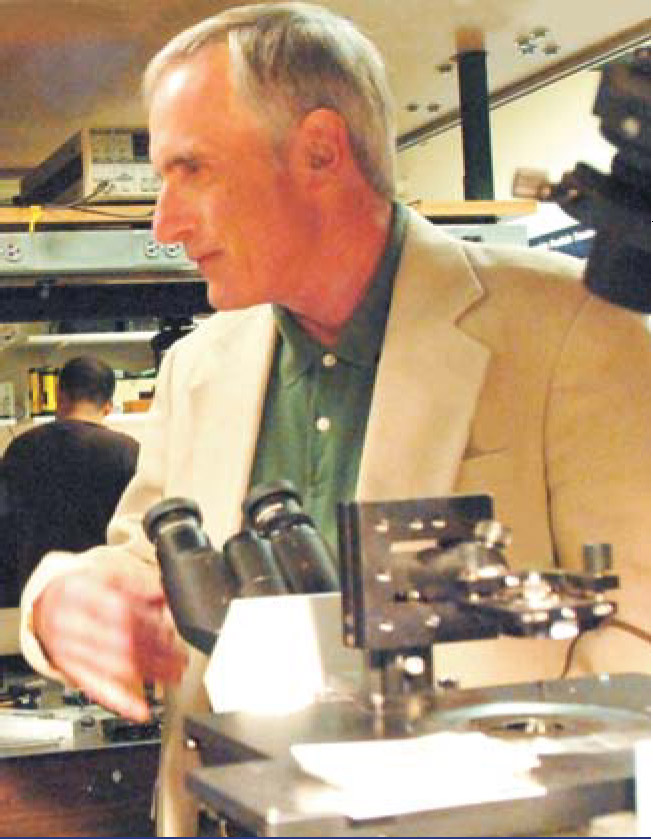Michael Stephen Feld
DOI: 10.1063/1.3518219
Michael Stephen Feld died in Boston on 10 April 2010, at age 69, after an eight-year struggle with multiple myeloma. He was widely known for his contributions to fundamental laser physics and for pioneering lasers and spectroscopy to biomedical problems.
Feld was born 11 November 1940 in Brooklyn, New York. He graduated from Lynbrook High School on Long Island in 1958 and from MIT in 1963 with an SB degree in humanities and sciences and an SM degree in physics. He stayed on at MIT to earn a PhD in physics in 1967 for research on laser spectroscopy under Ali Javan. In 1968 Feld joined the MIT physics department as an assistant professor and went on to a varied and productive career as a member of the physics faculty.
Feld’s graduate research laid the foundation for a lifelong interest in quantum optics. He established his presence in that field by demonstrating superradiance—the enhancement by coherence effects of the emission of light from a collection of radiators—in a molecular gas. By pursuing that problem in the face of skeptics who thought that Doppler broadening would make the effect impossible to observe, he demonstrated an independence of thought and scientific determination that would mark his career.
His research in quantum optics led Feld into the field of cavity quantum electrodynamics. In 1987 he began a series of experiments on radiative shifts and enhanced and suppressed spontaneous emission of single atoms in an optical resonator. Those culminated in his development of the single-atom laser in 1994.
From 1976 until his death, Feld was director of MIT’s Harrison Spectros-copy Laboratory. In that role he fostered collaborations among physicists, chemists, biologists, materials scientists, and physicians by welcoming them to participate in the laboratory. To support cooperative research, he established the MIT Regional Laser Facility, funded by NSF, and the MIT Laser Biomedical Research Center, funded by the National Institutes of Health. One of the research center’s many achievements was the development of the diffraction phase microscope (shown in the photo), which yields nanoscale quantitative measurements of the structure and dynamics of live red blood cells.
Feld was notably direct. He questioned with equal intensity, acuteness, and persistence academic administrators, janitors, colleagues, waiters, students, and deliverymen. That quality helped him develop fruitful collaborations with scientists from a wide range of fields. Starting in the 1980s, those collaborations helped him turn his attention increasingly to applying lasers and laser-based techniques to biomedicine and biomedical engineering.
Feld was an early leader in the use of light scattering, fluorescence spectroscopy, and Raman spectroscopy to investigate arterial plaque in vivo and to provide early cancer detection in some organs. In recent years his research shifted; rather than use those intensity-based modalities, he used field-based light scattering to develop low-coherence interferometry and to explore how to suppress turbidity and obtain images from inside apparently opaque tissue.
Near-IR Raman spectroscopy has made it possible to measure levels of blood glucose through the skin without the prick of a needle. Quantitative phase microscopy has produced three-dimensional maps of the refractive index of live cells free of labels or dyes. It also permits early diagnosis of breast cancer and assessment of whether cells at the margins of a cancerous lesion are themselves cancerous.
For his foundational contributions to laser spectroscopy and the biomedical use of spectroscopy, Feld received the 2008 William F. Meggers Award from the Optical Society of America.
Throughout his career Feld enthusiastically engaged in undergraduate and graduate teaching at MIT. He supervised more than 50 PhD theses. Reflecting his breadth of interest, they were in chemistry, mechanical engineering, bioengineering, and materials research, as well as in physics, and several were part of the MIT-Harvard Health Sciences and Technology program.
The 1963 March on Washington marked the beginning of Feld’s lifelong concern about minority graduate education in physics at MIT. He cochaired the committee that initiated establishment of MIT’s Dr Martin Luther King Jr Visiting Professors Program, and, with characteristic direct action, he personally guided five minority graduate students to their PhD degrees.
One of those students was Ronald McNair, who went on to a career as an astronaut. Feld and McNair became close friends, and their teaching was reciprocal: Feld mentored McNair in physics; McNair taught Feld karate. Feld obtained a brown belt and was proud to be outdone by his twin sons, Jonathan and David, who became black belts. As was typical, once Feld became interested in karate, he made a serious study of its physics. He presented widely appreciated talks on the physics of karate with demonstrations that sometimes included his sons; he and McNair coauthored articles on karate. McNair’s death in the space shuttle Challenger accident in 1986 was a deep personal loss for Feld.
Michael Feld was a creative, innovative physicist and a man of great charm, always asking for more effort, more time, and more insight from his collaborators and students. Many of them are today advancing laser physics, quantum optics, biomedicine, and biomedical engineering along paths that he opened. Through their work Feld’s already large impact on the scientific community continues to grow.

Michael Stephen Feld
DONNA COVENEY, MIT MEWS SERVICE

More about the Authors
Ramachandra Rao Dasari. Massachusetts Institute of Technology, Cambridge, US.
Daniel Kleppner. Massachusetts Institute of Technology, Cambridge, US.
Charles H. Holbrow. Colgate University, Hamilton, New York, US.
